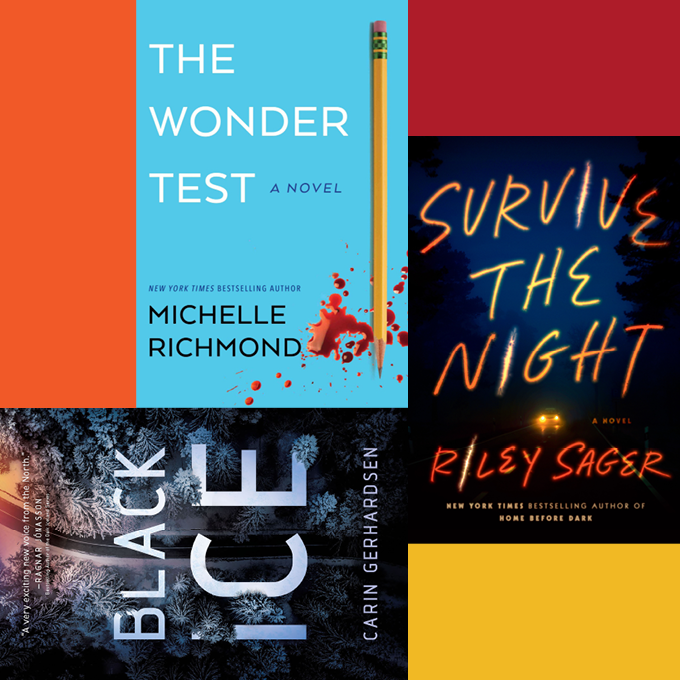Think you test well? Then take a crack at this question: “Is it better to do the right thing for the wrong reason or the wrong thing for the right reason? Using diacritical logic, chart your answer.” I doubt that diacritical logic exists, but using plain vanilla logic, it’s fair to say that in Michelle Richmond’s The Wonder Test, nearly everyone does the wrong thing for the wrong reason.
The S.A.T. pales next to the Wonder Test, a ridiculously impossible standardized exam that’s the No. 1 priority for students at the public high school in Greenfield, in the heart of Silicon Valley. They devote every day to mastering it so that the school can maintain its coveted status as the top scorer in the nation, “status” being the operative word.
F.B.I. agent Lina Connerly, a recent widow on leave from the New York office, finds herself and her teenage son drawn into test-prep madness when he enters 10th grade in Greenfield. A local cop tells Lina that, in the last couple of years, three students have disappeared from the town and then returned two weeks later, much the worse for wear but silent about their ordeal. Intrigued, Lina investigates further and concludes that something is very wrong in this sunny land of over-achievers.
A witty blend of satire and thriller, The Wonder Test targets the win-at-all-costs ethos of Silicon Valley education culture and the harm it does to kids. The action gets increasingly nutty in the latter part of the book—you may wish you could unread one foray into the bizarre predilections of the bored and privileged—but the grounding presence of Lina and her son keeps the story on track as it speeds to a conclusion that’s both harrowing and hilarious.
Cell phones and Google would solve a lot of the problems encountered by the characters in Survive the Night, so Riley Sager has prudently set his book in 1991, before such potential crime busters could save our lives.
They would have been a big help to Charlie, a film student at Olyphant University in the Northeast, looking to go home to Ohio. She meets a guy going her way at the ride board and, despite some misgivings, agrees to kick in for gas and hit the road with clean-cut, affable Josh Baxter. The fact that her best friend was recently murdered by the Olyphant Campus Killer should probably have made her more cautious, but never mind. (If you’re going to hop into the Grand Am with Charlie, you have to accept that a serial killer has been operating at Olyphant for several years and that the school carries on with just a few precautions in place.) Some part of her is intentionally courting danger, because she’s convinced that she deserves punishment in the wake of her friend’s death.
Once Charlie and Josh head out, the back-and-forth between passenger and driver becomes incrementally more ambiguous and tense. The movie-obsessed Charlie has coped with her trauma by going on hallucinatory cinematic walkabouts—is she in Hitchcock’s Shadow of a Doubt or at a toll plaza in Pennsylvania?—so her mounting suspicions about Josh seem paranoid even though he clearly has something to hide.
Sager’s tight focus on the pair as they plow through the night, stopping at lonely diners and gas stations that could be escape routes for Charlie, cranks up the stress level to 11. Gen X readers with fond memories of phone booths, analog message boards, and Nirvana will be especially taken with this nerved-up, noir-ish road trip into the past.
The social contract suggests that there are certain things you really should do: return the wallet a previous passenger left in a cab, call 911 if you see someone take a bad fall in the street. But it’s a fragile construct, and each person who witnesses the fatal hit-and-run crash that sets off a cascade of events in Black Ice makes the decision to leave the scene of the accident without notifying the authorities. Or anyone. They do nothing because they’ve got secrets to protect and maybe something to gain by walking away. Greed and self-interest override basic decency, with far-reaching results.
Swedish writer Carin Gerhardsen structures her tale meticulously, framing it with installments of a fictionalized serial in the Gotland newspaper by someone who was peripherally involved, while alternating chapters tell the story from different perspectives. Information is teased out slowly to paint a picture of the accident’s repercussions, and surprising connections are made that reveal how the characters are forever linked by a single misfortune.
The kidnapping of a child, a middle-class woman’s spiral into substance abuse, a single mother’s determination to find her voice—all flow from the moment a man’s car lands at the bottom of a ravine.
Gerhardsen was a mathematician before becoming a writer, which might explain the precision with which she’s mapped her characters’ backstories and trajectories. Black Ice is both an intricate puzzle and a probing psychological study of flawed people as they navigate a series of moral dilemmas, often making the wrong choice or misunderstanding the actions of another. Ultimately, the book’s greatest strength lies in its messy humanity.
Lisa Henricksson reviews mystery books for Air Mail. She lives in New York City

